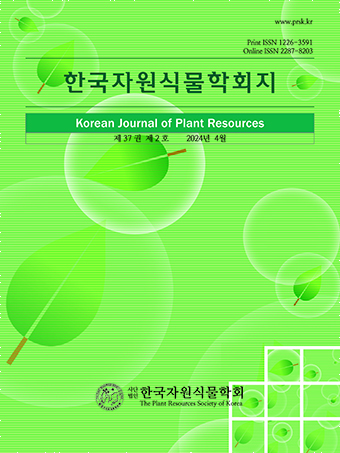Abstract
References
Information
Kim, J.W., B.K. Choi, T.B. Ryu and Lee, G.Y. 2012. Application and assessment of National Vegetation Naturalness: In National Institute of Environmental Research (ed.), Guideline for the 4th National Survey for Natural Environment. National Institute of Environmental Research, Inchon, Korea. pp. 81-172 (in Korean).
- Publisher :The Plant Resources Society of Korea
- Publisher(Ko) :한국자원식물학회
- Journal Title :Korean Journal of Plant Resources
- Journal Title(Ko) :한국자원식물학회지
- Volume : 35
- No :4
- Pages :515-540
- Received Date : 2022-02-18
- Revised Date : 2022-03-31
- Accepted Date : 2022-04-01
- DOI :https://doi.org/10.7732/kjpr.2022.35.4.515




 Korean Journal of Plant Resources
Korean Journal of Plant Resources







